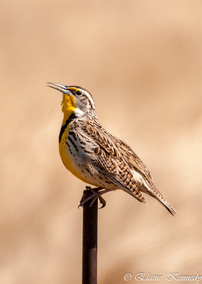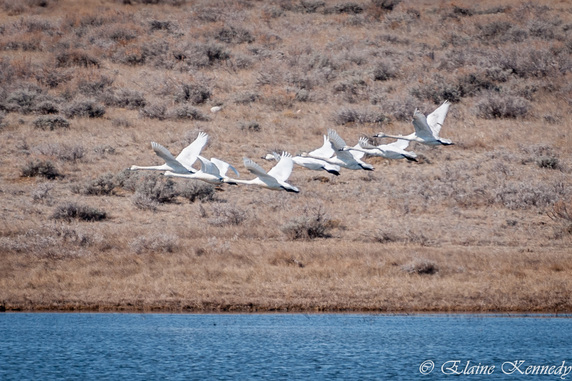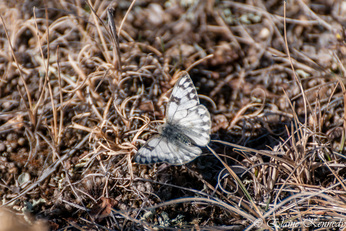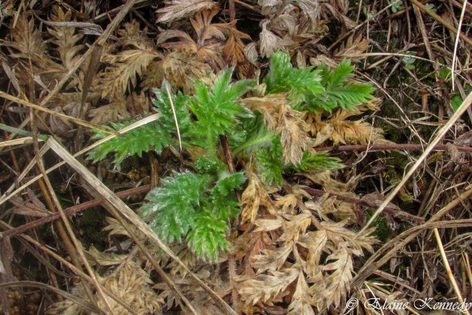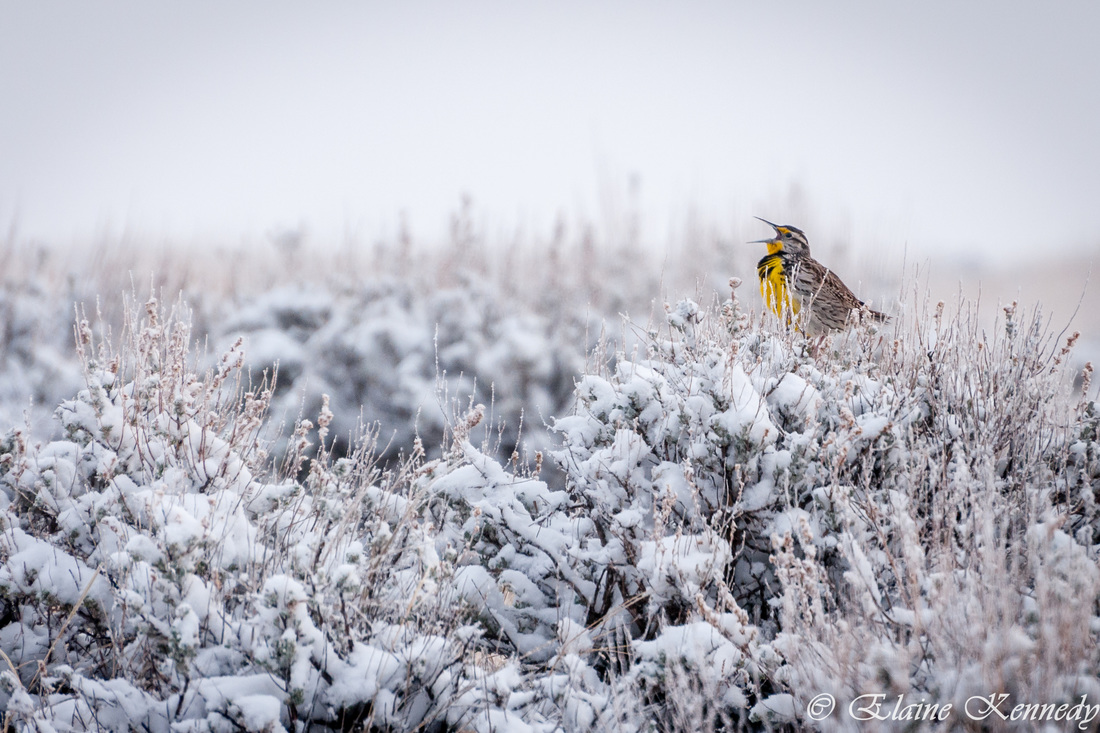|
Story and Photos by Elaine Kennedy
The western meadowlark (Sturnella neglecta) is one of the most iconic birds of the prairies. Easily identified by their distinctive yellow chest, their abundance, and by their sweet, melodic song that echoes throughout the plains from sunrise to sundown. For me, the meadowlark has come to symbolize the arrival of spring in the prairies. They seem to appear out of thin air when the snow starts to melt and the days begin lengthening. When I arrived in Montana at the beginning of March, I was already looking forward to hearing their buoyant tune. Listen to the meadowlark’s song here: |
March 3: The first day of fieldwork introduces us to a typical day of harsh prairie winter: -20oF, cold biting wind, and a full blanket of snow on the ground. The only birds to be found are horned larks, rough-legged hawks, and the hardy grouse that persevere on the plains year-round. Warm days and meadowlarks seem a long way off.
March 10: One week water, temperatures hit the 60s and we hike in t-shirts for the first time, excited about the unseasonably warm weather. It’s starting to feel like spring, although noticeably lacking in birdsong.
March 11: The first three-flowered avens pokes its vibrant green leaves up through the thawing earth, welcoming the warm temperatures. The meadowlarks are really missing out on some prime springtime wildflower excitement here.
March 12: Migratory waterfowl start to settle in the ponds and marshes on APR. We observed northern pintails, blue teals, goldeneyes and tundra swans. Surely the meadowlarks can’t be too far behind?
March 16 (morning): The first scarlet mallows and cinquefoils show their miniscule leaves on the plains, fighting their way through last year’s litter. Many plants are sprouting up now for the growing season, but it feels incomplete without the meadowlarks’ lively tunes.
April 8: The meadowlarks are absolutely everywhere by now, and not a day goes by that I don’t pause and listen to their cheerful melodies. In both an ecological and cultural sense, they’re a ubiquitous and integral part of the prairie community.
The herald of springtime and a symbol of hope, meadowlarks will always be one of the best-known and best-loved birds of the prairie. And every winter I will continue the patiently wait for the day when that familiar, cheerful song rings once again through the landscape, and then I’ll know that spring is just around the corner, the meadowlarks are here to welcome it, and I am here to welcome them.
Elaine Kennedy grew up in Southern Ontario and graduated from the University of Guelph with a degree in Environmental Science. For two summers, she has performed environmental monitoring on the Canadian prairies for the Canadian Wildlife Service and Alberta Biodiversity Monitoring Institute. You can see more of Elaine’s work at elainekennedyphotography.com.

